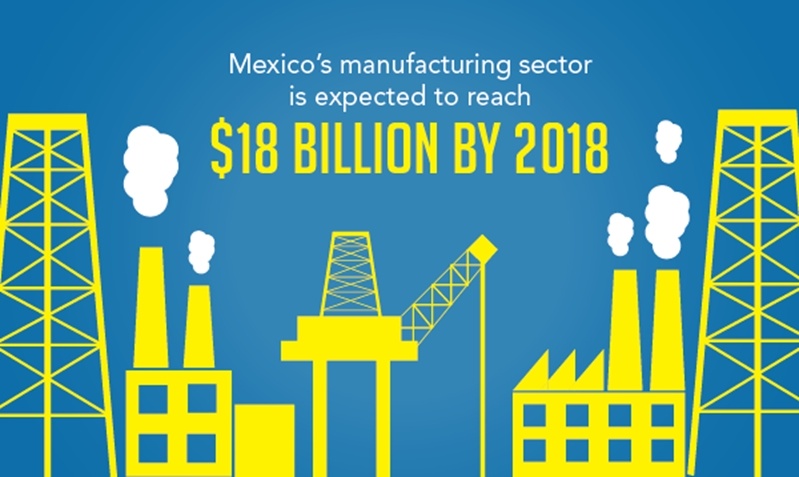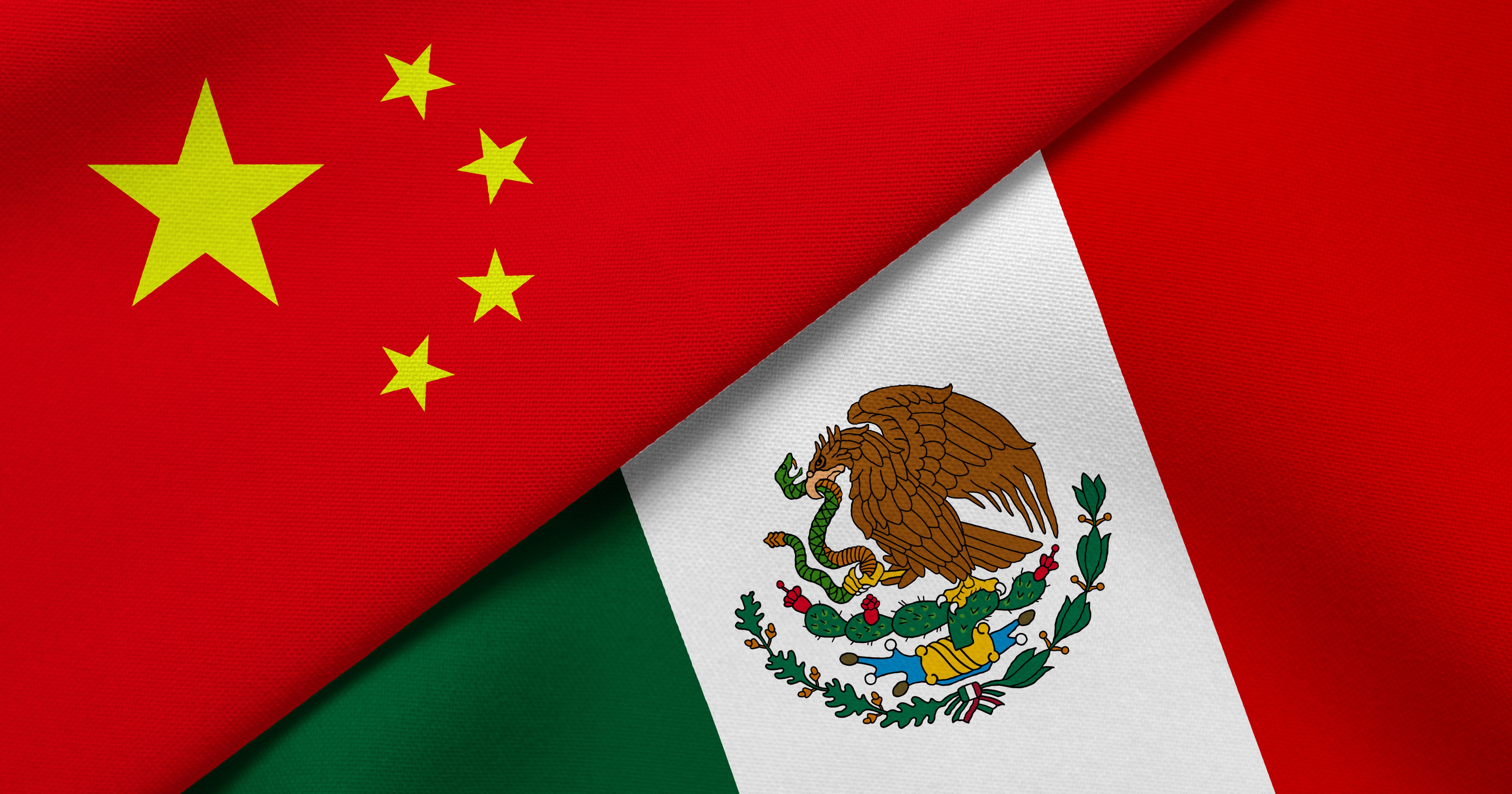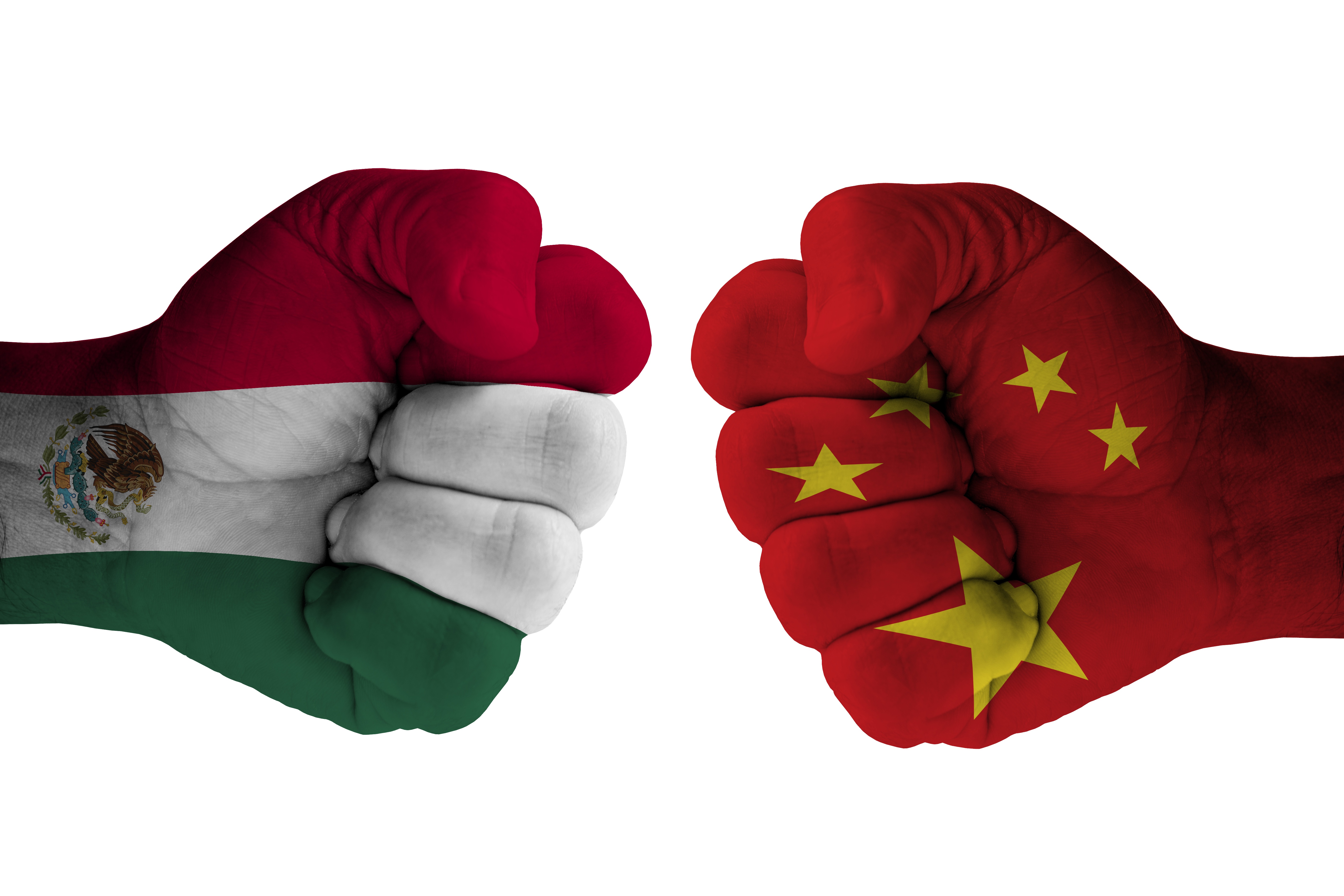Growth of manufacturing in Mexico and the steady decline of China's manufacturing sector have occurred almost simultaneously, and the trend continues.
Official data from China's National Bureau of Statistics indicates China's manufacturing sector shrunk to a three-year low in August. According to the report, China's official manufacturing purchasing-managers index fell to 49.7 in August from 50 in July. These results raise alarm regarding China's economic health: While a PMI above 50 signifies growth in the manufacturing sector, a PMI reading below that level represents a decline.
Meanwhile, Mexico's manufacturing sector is expected to reach $18 billion by 2018, and according to the Manufacturers Alliance for Productivity and Innovation, the country will continue to lead manufacturing growth in Latin America through 2016. Citing fDi Markets, in response to this rapid growth, Mexico attracted 366 greenfield investment projects in 2014 totaling an estimated $33 billion, The Financial Times reported.
Moving from China to Mexico
There are many economic factors unrelated to Mexico that contributed to China's economic outlook in August, including factory shut downs due to anti-pollution efforts, poor weather conditions and a 2 percent slip in the value of the yuan in July. However, companies are beginning to see the value of manufacturing closer to the U.S., as overhead costs of manufacturing in China are often prohibitive.
 Mexico's manufacturing sector will continue to grow as companies realize the offshoring advantages.
Mexico's manufacturing sector will continue to grow as companies realize the offshoring advantages.Citing research from AlixPartners, The Journal of Commerce reported in a survey that of the near-sourcing plans of 142 senior manufacturing and distribution executives, 86 percent plan to increase their foreign manufacturing presence closer to the U.S. in the next two or three years. This isn't news to China: According to South China Morning Post, Boston Consulting Group revealed manufacturing in Mexico is now 4 percent cheaper than in China. This is a major change from 10 years ago, when manufacturing in Mexico was 6 percent more expensive than in China.
As manufacturing in Mexico becomes more appealing worldwide, China is likely to continue seeing its sector contract. As such, manufacturers should consider a few key offshoring advantages of Mexico compared to China:
1. Skilled labor
In the past, Mexico was not considered to have skilled, quality labor, which is why China was more appealing to manufacturers. Today, this is no longer the reality. With a 22 percent college graduation rate, according to Business Insider, and the country's overall investment in education surrounding engineering, manufacturers across various industries are confident in the quality Mexico's workers can produce.
According to Area Development, Mexico has doubled its number of public two-year colleges and four-year universities. Additionally, the government financed 140 new colleges and universities, the majority of which emphasize science and engineering. As a result, more Mexicans are earning engineering degrees annually than both Canadians and Germans. This becomes even more appealing when you consider the cost of labor in Mexico. According to a study by the Boston Consulting Group, average manufacturing labor costs in Mexico are projected to be 19 percent lower than in China, while in 2000, Mexican labor was 58 percent more expensive than in China.
"Average manufacturing labor costs in Mexico are projected to be 19 percent lower than in China"
2. Shorter supply chains and speed to market
Mexico's proximity to the U.S. and 44 free-trade agreements mean manufacturers can export goods to the high-demand markets quickly and affordably. Supply & Demand Chain Executive underscored this fact, pointing to the growing trend of auto manufacturers moving part of their production from Asia to North America in response to increased production costs and growing complexity and risk of supply chains from Asia to the U.S. As China's manufacturing sector continues to contract, supply chain costs from the country to the U.S. are likely to increase.
3. Improved relations with the U.S.
While skilled labor and supply chain benefits certainly add to the appeal of manufacturing in Mexico, improved relations with the U.S. make offshoring in the country profitable. Mexico News Daily reported total goods trade in 2014 between Mexico and the U.S. was $534 billion, a 5 percent increase from $507 billion in 2013. Additionally, Mexico's share of United States imports was 12.5 percent.
Further, the U.S. recently approved limited crude oil trading with Mexico, an important step in the country's efforts to boost economic productivity by opening its energy markets and improving fuel efficiency. According to The Wall Street Journal, the U.S. and Mexico will begin exchanging heavy oil pumped in Mexico for light crude oil produced in the U.S. This agreement will bring 100,000 barrels of U.S. oil into Mexico per day, reducing energy costs and making the country's refineries more efficient.
Subscribe
Sign up and stay informed with tips, updates, and best practices for manufacturing in Mexico.





